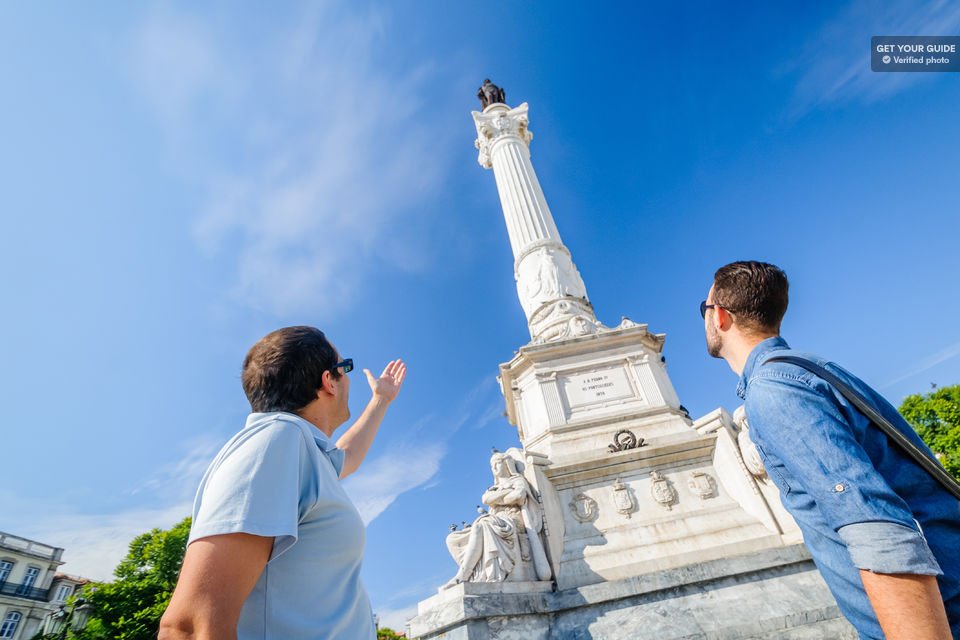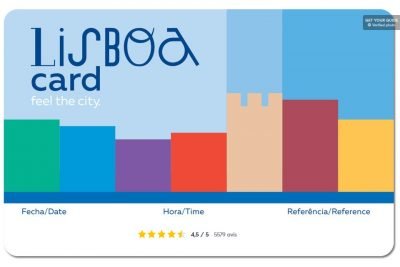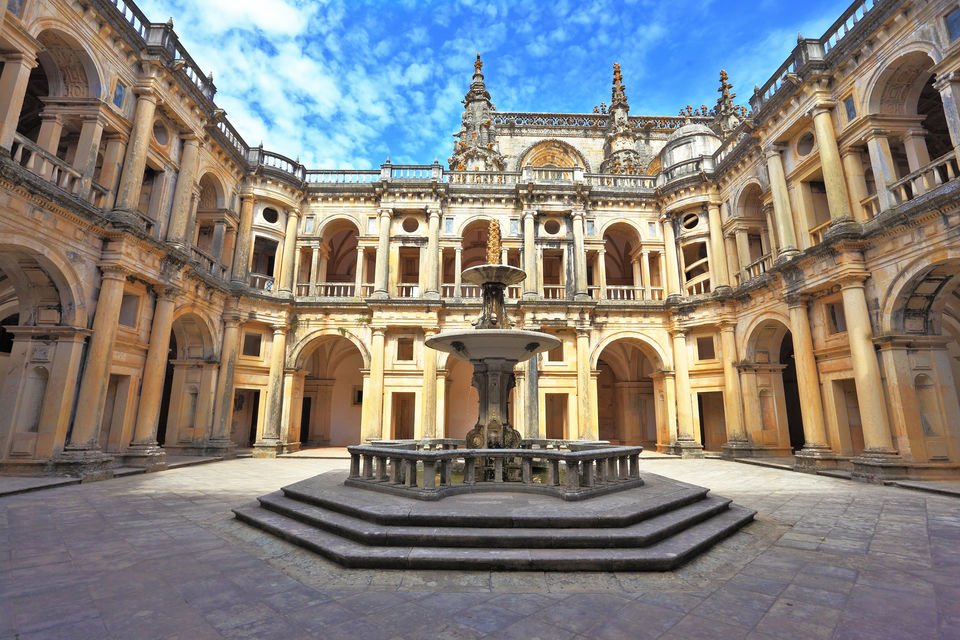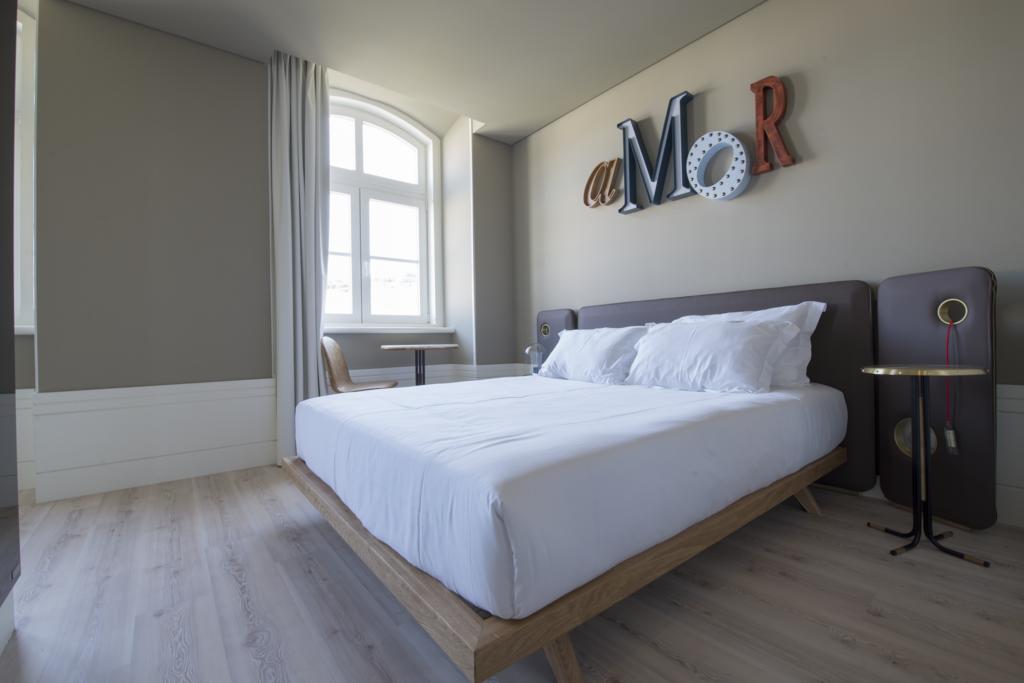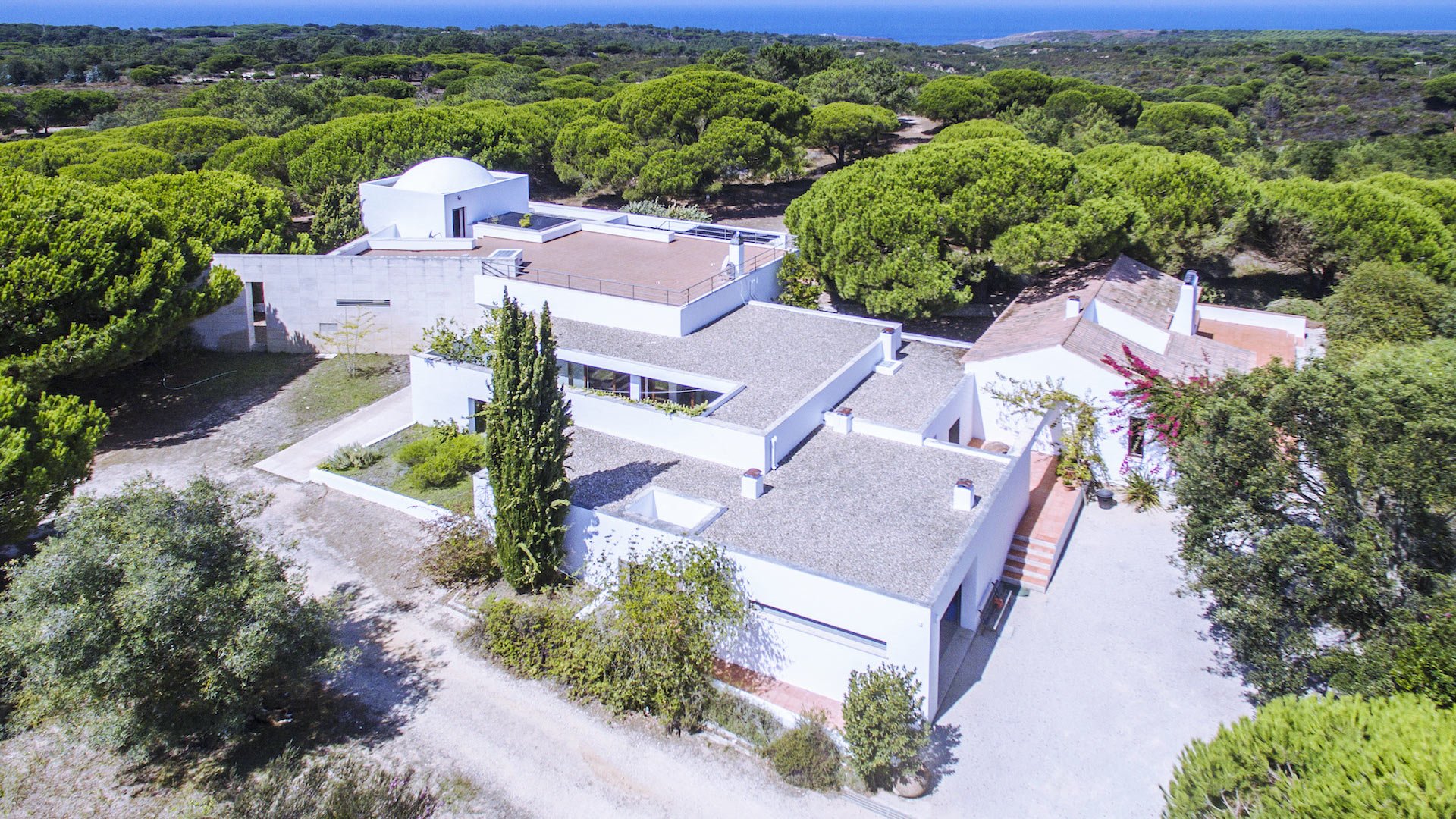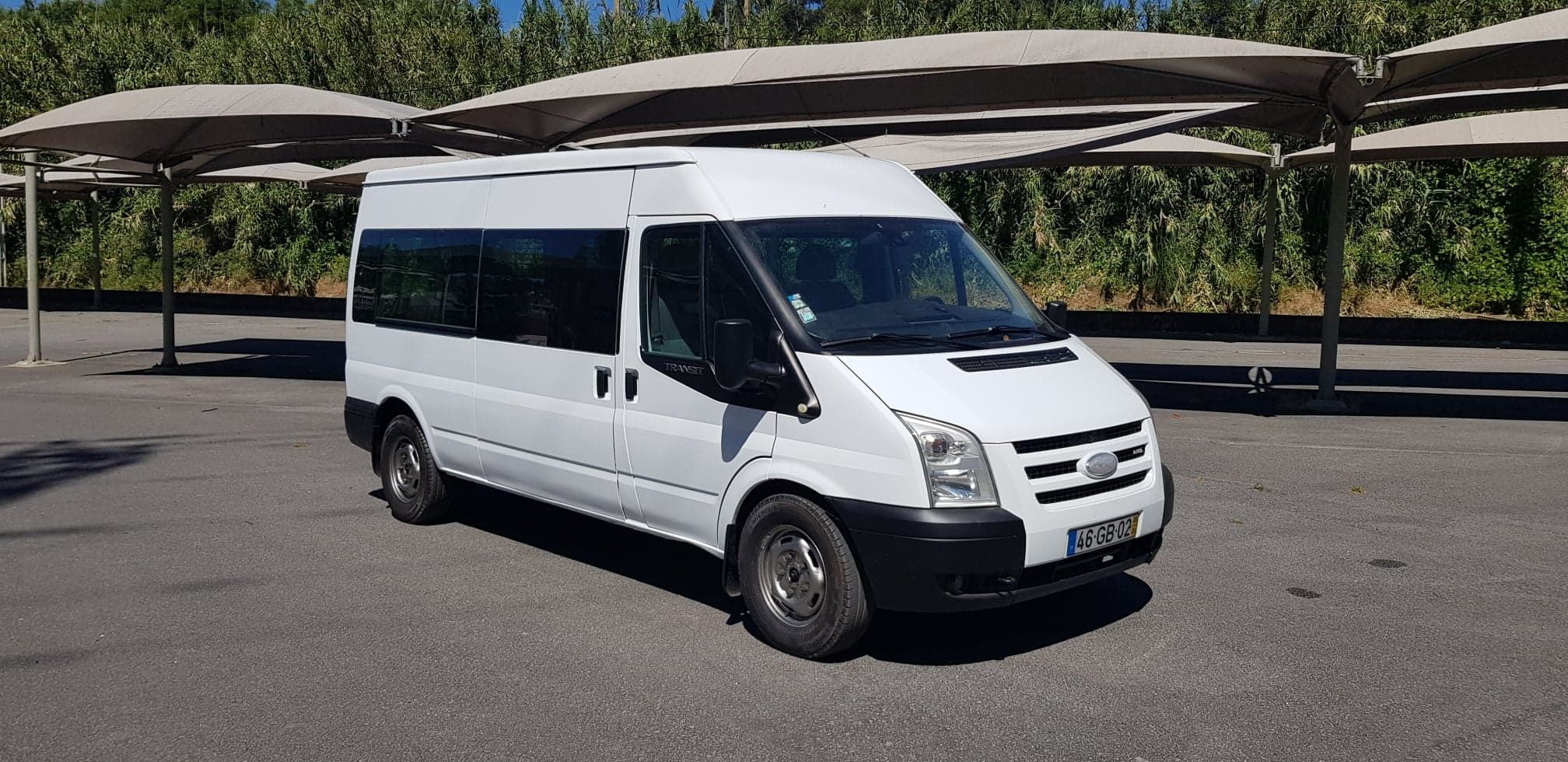Pena Palace and Park in Sintra
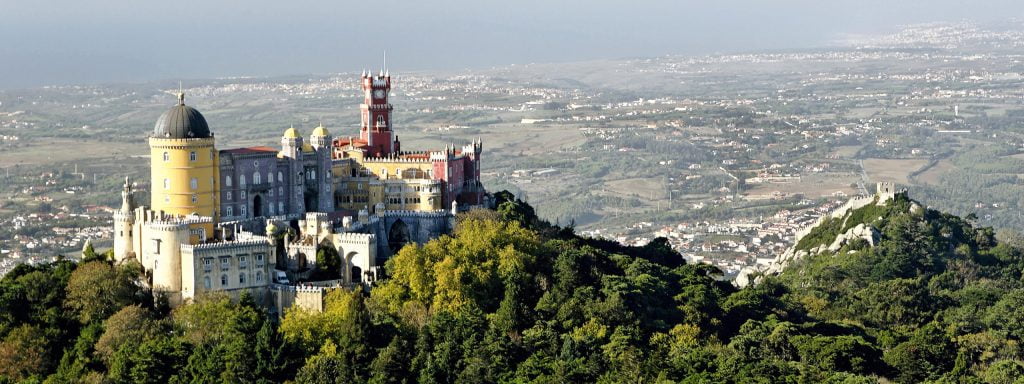
Pena Palace: book your visit
Book below your visit to the Pena Palace in the Lisbon area. All tours offered have excellent commentaries, are conducted by an English speaking guide and can be booked or cancelled only 24 hours before the end of the visit in case you have changed your programme.
Introduction to Pena Palace
The Pena Palace is located in the charming suburb of Lisbon – Sintra. The fairy-tale castle stands on top of a high hill in the Sintra mountain range, not far from the city of the same name. On a clear day, the Pena Palace is easily visible even from Lisbon and most of the greater metropolitan area. The Pena Palace is a UNESCO World Heritage Site, a national monument of Portugal and one of the seven wonders of the country, along with the Guimarães Castle, Obidos Castle, Batalha Monastery, Alcobaça Monastery, Jerónimos Monastery and the Belem Tower.

The Pena Palace is also used for official state events and is simply magnificent and out of the ordinary. It’s a must visit if you come to spend your holidays in Lisbon. It has become in a very short time one of the most visited tourist monuments along with the Sao Jorges Castle in Lisbon.
Going to the Pena Palace in Lisbon
First from Lisbon you will have to go to Rossio station, then take the train to Sintra 40 minutes away. The fare from Lisbon to Sintra by train is 2.90€ and you can pay for the journey with a card or buy tickets at the station’s ATMs. From Sintra station, you can take bus number 434 or drive to the entrance of Palacio de Pena to visit it: the journey takes 5-10 minutes. The cost of the bus ticket is 4€ one way or 6,90€ return, this bus cannot be paid by card and the ticket must be bought directly from the driver.
In principle, it is possible to go up the mountain on foot but this is only to be considered if you are sporty and a little physical activity doesn’t scare you. The mountain is quite high. The summit of Cruz Alta in the Sintra mountain range is 528 meters above sea level.

Prices and opening hours of Pena Palace
Timetables and ticket prices for Pena Palace depend on the season. This tour of Sintra is open every day except December 25th and January 1st.
Timetable of Pena Palace between 25 March and 27 October :
- Palace: from 09.45 to 19.00, last entrance at 18.15
- Park: from 09:30 to 20:00, last entrance 19:00
Timetable of Pena Palace between October 29th and March 24th :
- Palace and Park: from 10 am to 6 pm
You will be able to buy tickets if you wish to visit Pena Palace and its park or just the Park. Unfortunately, there are no tickets available to visit only the Palace.
Price of the visit for the Pena Park and its castle :
- Price for adults from 18 to 64 years old: 14€.
- Price for young people from 6 to 17 years old: 12,5€.
- Price for seniors over 65 years old: 12,5€.
- Price for families of 2 adults + 2 young people: 49€.
Price of the visit for the Pena Park only:
- Price for adults from 18 to 64 years old: 7,5€.
- Price for young people from 6 to 17 years old: 6,5€.
- Price for seniors over 65 years old: 6,5€.
- Price for families of 2 adults + 2 young people: 26€.
You can also, if you wish, buy the Lisboa Card, a discount card for many visits to Lisbon and the region. To find out all about this discount card, consult the Lisboa Card Guide.
Click on the Lisboa Card to order it online
The Pena Palace itself is not located at the entrance to the park. There is quite a lot of walking to do uphill but you can if you wish take a bus for 3€ which will take you to the foot of the palace.
Pena Palace: the interiors
The interior of the palace is very interesting. The Gothic vaults give a lot of style to the rooms. The windows and rooms are quite small with little light, but the views you can admire behind the windows are absolutely magnificent. You can see the castle of the Moors, which stands on another peak.
First, visitors enter the former monastery courtyard, a clubhouse. The dining room of the royal family occupies the same space as the dining room of the monastery. The most obvious change in the 19th century was the wall tiles. On the corner shelves is part of the ceramic collection created by King Ferdinand II. The dishes are arranged according to historical photographs, i.e. as they were under King Ferdinand.
The great hall of Pena Palace is the brightest and largest room. Originally it was supposed to be the official reception hall but later the king transformed it into a billiard room with elegant sofas and armchairs. The great hall of the palace was restored in 2014.
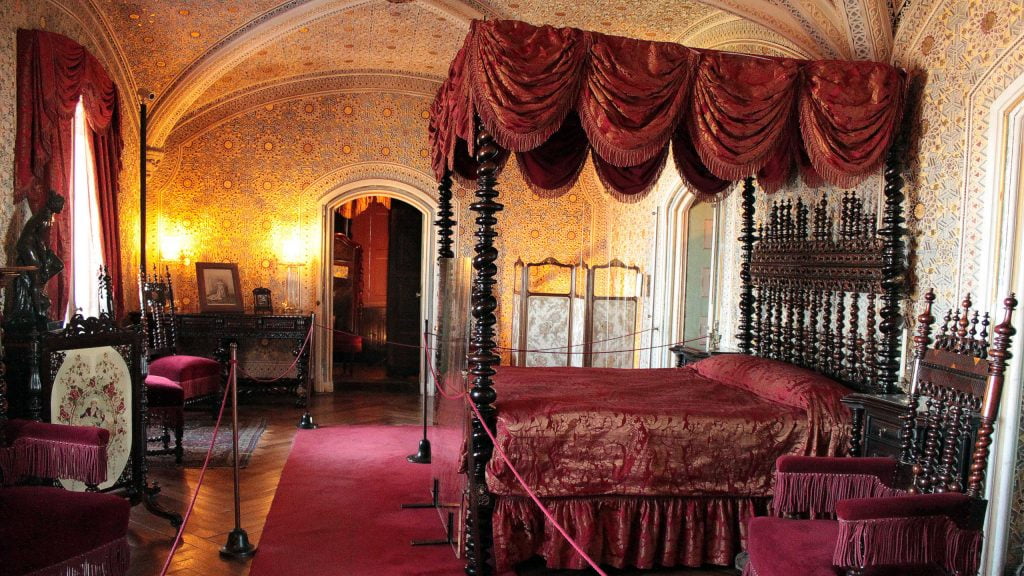
The park of the Pena Palace is simply immense, its surface is more than 200 hectares. The whole park is situated on a sloping terrain, where you can find many pleasant corners, various architectural elements and a very large number of rare foreign plants. It is like a botanical garden. Tickets come with a map of the park so that you don’t miss anything of your visit to Sintra and this fabulous park.
One of the most interesting things to see at Parque da Pena is the Chalet da Condessa (or Casa do Regalo), which is located at the western end of Parque da Pena. It was built by D. Fernando II and his future second wife, Elise Hensler (Countess of Edla) as a private summer residence. It is a two-storey building of alpine inspiration. Pena Palace was declared a National Monument in 1910 and is part of the Cultural Landscape of Sintra, which has been a UNESCO World Heritage Site since 1995.
In 2013 it joined the Network of European Royal Residences.
Architecture of the Pena Palace
The architecture of the Pena Palace is a mixture of several styles, which is typical of 19th century Romanticism. By observing the Pena Palace in detail, you can see elements of Gothic, Moorish and even Renaissance style. There are also many references to Lisbon’s famous buildings in the architecture. For example, the entrance portal clearly shows the motifs of a spiked house (Casa dos Bicos), and the turrets on the edges are reminiscent of the tower of Belem. The entrance portal is a crossroads between the triumphal arch and the medieval fortified gates leading to the Palace.
History of Pena Palace
The history of the Pena Palace dates back to the 12th century, when a small chapel in honour of the Virgin Mary was built on the top of the hill. According to legend, it was here that the miraculous phenomenon of the Virgin Mary took place.
In 1501, King Manuel I decided to build a monastery in honour of the Virgin Mary of Pena on the site of the chapel. The construction of the monastery took place almost at the same time as the construction of the famous Jerónimos Monastery in the region of Belém in Lisbon. But the monastery of Pena had a much smaller budget and never had more than eighteen monks. It was a very isolated place, far from the bustle of the world. It was only occasionally that the sovereign monarchs of Portugal honoured it with their visit.
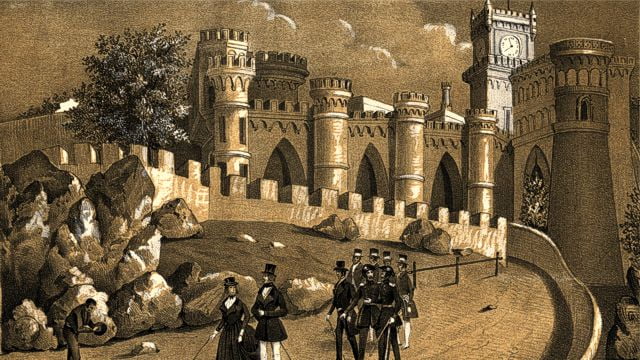
In the 18th century, the monastery was struck by lightning and all its wooden parts were burned. And in 1755, the great Lisbon earthquake turned it into ruins. Only a small chapel, allegedly built according to the project of Nicolas Cantherini, remained almost intact after the earthquake. Nicolas Cantherini also worked on the construction of the Monastery of Jerónimos in Belém.
The ruins of the old monastery were long forgotten, all forces were concentrated on the restoration of the capital and nobody cared about the small monastery on the mountain top. It was only in 1838 that the young king Ferdinand II (Fernando II) became interested in this wonderful place. Born in Germany, Fernando was the prince of the house of Saxe-Coburg and Gotha-Kohari. His childhood was spent in the courts of Austria and Bavaria. Later he married the Queen of Portugal Maria II, had his first child and received the title of king and founder of the new dynasty. Therefore, he was already close to the style of Romantic architecture, which was very present in Bavaria.
Ferdinand bought the land of the former monastery, several surrounding estates and the ruins of the Moorish castle. He then decided to rebuild the ruins of the monastery into a palace that would serve as a summer residence for the Portuguese royal family. The restoration of the building was entrusted to Lieutenant General and mining engineer Wilhelm Ludwig von Eschwege.
Eschwege, a German amateur architect, travelled a lot and probably visited several castles in the Rhine valley. Construction continued between 1842 and 1854 and was almost completed in 1847: King Ferdinand and Queen Mary II took part in the decoration of Pena Palace. Among other things, the king proposed vaulted arches, medieval and Islamic elements and designed a richly decorated window for the main façade (inspired by the window of the monastery of the Order of Christ to be discovered with a visit to Tomar in Portugal).
In 1853, Queen Mary died suddenly, trying to deliver her eleventh child. Ferdinand became regent before his son, the future King Pedro V, came of age.

After Ferdinand’s death, the palace was taken over by his second wife. The countess had been an opera singer and her relationship with the king was very mysterious. She was forced to sell the palace to King Luis. In 1889 the Pena Palace was bought by the Portuguese state and after the Republican Revolution of 1910 it was recognized as a national monument and turned into a museum.
The last queen of Portugal, Queen Amelia, spent her last night in the palace before leaving Portugal forever. The palace quickly attracted visitors and became one of the most visited monuments in Portugal. Over time, the colors of the red and yellow facades disappeared and the Pena Palace became completely gray. At the end of the 20th century, the palace was repainted and the original colours were restored.
In 1995, the palace and the rest of the cultural landscape of Sintra were inscribed on the UNESCO World Heritage List.
Related Articles
- Visit Ericeira
Ericeira is a small town in Portugal, full of charm and located only 50…
- Visit Cascais and Estoril
Cascais and Estoril are part of what is known as the Lisbon Riviera. Two…
- The Monastery of Jeronimos in Lisbon
Monastery of Jeronimos in Lisbon The Monastery of the Jeronimos of Lisbon or Mosteiro…
- Visit Lisbon in 1 to 5 days
There are a lot of Google searches such as "Visit Lisbon in 1 day", "Visit…
- Visit Lisbon by bus
Visiting Lisbon by bus is probably one of the favourite activities of tourists in…
- Visit Lisbon: 12 places to discover
Lisbon is one of the oldest cities in Portugal. The city is full of historical buildings,…
- Visit Lisbon: the "small" guide for your holidays
When you think of the country in which to spend your holidays in Europe,…
- Visit Obidos in Portugal
A former colony of Portugal, Obidos is a village located on the Atlantic coast…




